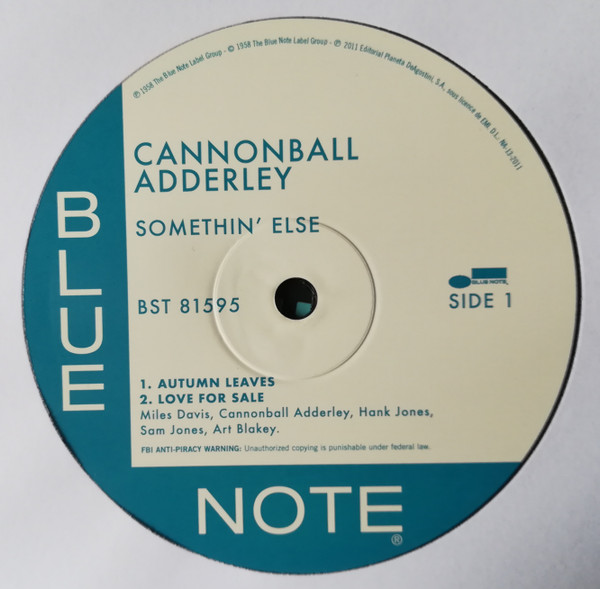Follow Us
Browse
Services
Le Discopathe Disquaire Bar Montpellier
28 rue du Faubourg du Courreau
34000 Montellier
France
0648811713
ALL RIGHTS RESERVED © CG
Open today: 16:00 - 23:00
1 / 0






Artists
Labels
Catno
BST 81595
Formats
1x Vinyl LP Album Remastered Reissue
Country
Release date
Jan 1, 2011
Genres
Somethin' Else est un album Jazz de Cannonball Adderley paru en 1958 chez Blue Note et est la première apparition de Miles et Cannonball sur un meme disque
Somethin' Else est un album Jazz de Cannonball Adderley paru en 1958 chez Blue Note. Cet album figure parmi de nombreux classements d' « incontournables du jazz »
En octobre 1957, Cannonball Adderley dissout son groupe pour rejoindre le sextet de Miles Davis (avec lequel ils enregistreront, entre autres, le légendaire Kind of Blue).
Somethin' Else est pourtant la première apparition de Miles et Cannonball Adderley ensemble sur disque4. Bien que Miles ne soit que « sideman », il est au centre de tout l'album : il joue la plupart des premiers chorus, compose le morceau-titre et choisit la plupart des morceaux7.
Le blues One for Daddy-O a été composé par Nat Adderley pour l'animateur radiophonique Holmes « Daddy-O » Daylie. À la fin de ce morceau, on entend Miles demander au producteur Alfred Lion « C'est ça que tu voulais, Alfred8 ? »
« De retour à New York, Cannonball, qui avait signé pour un disque avec Blue Note, m'a demandé d'y participer. J'ai pris ça comme une faveur qu'il me demandait. Ce disque, intitulé Something Else, était très bien. »
Sold out
*Taxes included, shipping price excluded
Rip Samples from vinyl, pics and Discount on www.lediscopathe.com. Please feel free to ask informations about our products and sell conditions. We ship vinyles world wide from our shop based in Montpellier (France). Come to visit us. Le Discopathe propose news and 2nd hands vinyls, collectors, rare and classic records from past 70 years
A1
Autumn Leaves
A2
Love For Sale
B1
Somethin' Else
B2
One For The Daddy-O
B3
Dancing In The Dark
Le Discopathe Disquaire Bar Montpellier
28 rue du Faubourg du Courreau
34000 Montellier
France
0648811713
ALL RIGHTS RESERVED © CG